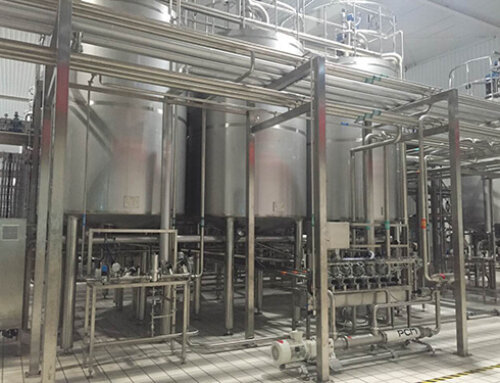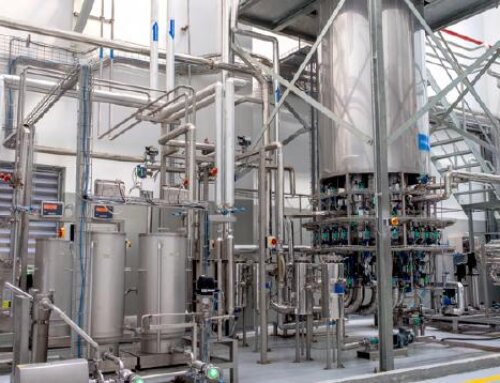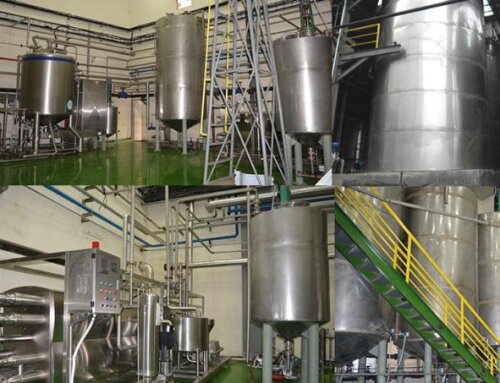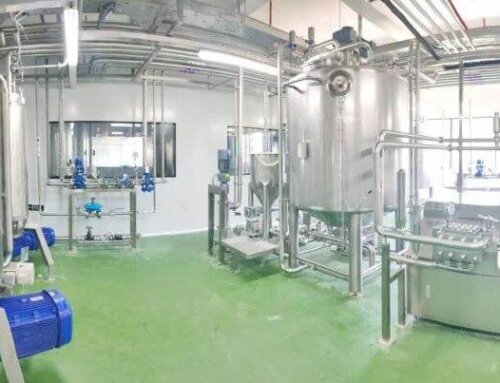With the improvement of living standards, people’s demand for beverages is increasing, and expectations are getting higher and higher. In particular, RTD drinks are getting more and more popular, and the market is steadily increasing. From the factory to the consumer, How are these beverages preserved during storage?
The spoilage of food is the result of bacterial growth. The growth of bacteria requires several basic conditions: Osmotic pressure, liquid strain, light, oxygen, temperature, PH, and water content. In theory, any factor in the controller can play a role in anti-corrosion. But in reality, it is difficult to completely control bacteria with a single factor, and the industry combines two or even three factors to achieve anti-corrosion.

Here are 5 ways to extend the shelf life of beverages:
I. Adding antiseptic— simple and crude—Inhibit the activity of microbial enzymes, make microbial protein coagulation and denaturation
Of course, in all kinds of food, preservatives are simple, crude and efficient antiseptic means. The National Food and Drug Administration has approved a variety of chemical preservatives that can be used in different beverages, such as benzoic acid and sodium benzoate, parabens and their sodium salts, disodium edetate, etc. These preservatives have undergone a sufficient safety assessment, and their use according to the specifications will not increase health risks and can achieve sufficient antiseptic effects.
However, many consumers dislike preservatives and want “preservative-free” beverages. Technically, this can be achieved. In the current food industry, many beverages do not add preservatives.
II. Use pasteurization and hot filling technology —Control beverage temperature and Oxygen.
–For acid beverage, we use pasteurize and hot filling technology to extend the shelf life of the juice.
–For neutral drinks, we use pasteurize and cold chain technology to keep the products’ long shelf life.
A common and relatively simple process is the hot filling of acidic beverages. The requirement of this process is that the beverage PH value is below 4.6. Under such acidity, the beverage is heated to 90 ° C, the bacteria in it are basically killed, and the bacterial spores cannot be left behind. Then, the beverage juice will be filled into a glass bottle or plastic while 85℃-95℃ and capped immediately, (when filling, it must be full filled so that the beverage can replace oxygen), and then the bottle is inverted to allow the beverage to fully contact the bottle for at least 6 seconds. During this process, the beverage needs to be kept above 82 ° C. In this way, the bacteria in the bottle are also killed. Because the bottle is sealed, the bacteria outside cannot enter, and the beverage will remain in a sterile state. Such beverages can be stored at room temperature for a long time, and this process can be adopted for fruit juices and various acidic beverages.
However, if the PH of the beverage is higher than 4.6, such as many protein drinks and meal replacement beverages, such a hot filling process is not enough to ensure safety. Because, in the case of relatively high pH, the general high temperature (even if it is heated to boiling) can only kill most bacteria, and some bacteria will form spores, the boiling temperature is not enough to kill them. Therefore, after hot filling, there may still be spores lurking, and when the conditions are right, they will wake up and begin to multiply, causing the beverage to spoil. Fortunately, spores cannot wake up at low temperatures, so if a neutral beverage is hot-filled and then refrigerated, it can still be stored for a long time.

III. UHT technology and aseptic filling technology—Control temperature, light, oxygen
–For high-quality neutral drinks (milk, dairy), we use UHT and aseptic filling technology to keep the products’ long shelf life.
If a neutral beverage is to be stored at ambient temperature, it needs to be heated more vigorously to kill the bacterial spores. This vigorous heating usually needs to reach 120 ° C for 20 to 30 minutes. This temperature requires a pressure cooker to reach it. Small-scale production requires bottling and then heating. It should be noted that the 120 ° C requirement is for every place in the bottle. In other words, it is not necessary for the temperature of the RETORT to reach 120 ° C for 20 minutes, but also consider how much extra time is needed to reach this temperature in the center of the bottle. In fact, this is the process of canned food. Following the operation requirements in a standardized manner can ensure safety. However, if the pressure of the pressure cooker is not enough, or if the heating time is not long enough, there may be some spores left. Such beverages are stored at room temperature and lack of oxygen in the can, those anaerobic spores may grow. For example, the infamous botulinum can grow under such conditions, and the botulinum toxin they secrete is much more toxic than arsenic. Unfortunately, those who are recruited may even be life-threatening. In the United States, home-made canned food is very popular, but there have also been many cases of botulinum toxin poisoning. The reason is caused by insufficient heating.
Large-scale neutral beverage production can also adopt the process of ultra-high temperature heating and aseptic filling. That is to heat the beverage to above 135 ° C, it only takes a few seconds to kill bacteria and spores, and then lower the temperature below the boiling temperature, and fill it into a sterilized container in a sterile workshop. Because the heating time is very short, this process is easy for continuous production. Although the one-time equipment investment is large, the operating cost is relatively low, which is suitable for large-scale production. In this way, the “aseptic filling” neutral beverage can also be stored for a long time at a normal temperature.
The most representative beverages produced by this technology are Tetra Pak milk. After the fresh milk is filtered, UHT sterilization technology (135-137 ° C for 4-6 seconds) is used to make the milk commercially sterile. It is then immediately filled into Tetra Pak by an aseptic filling machine. Because the aseptic filling is filled at normal temperature (30-40 ° C), the filling environment, packaging materials, materials, pipes, etc. must be kept sterile, so that the final packaging products will be commercially sterile, The shelf life of the goods can reach 6-12 months at room temperature.

IV. Pasteurized and cold filling technology —Control temperature
For some heat-sensitive beverages, high-temperature treatment will lead to a large number of nutrients destroyed, so it is necessary to use pasteurization (85-95 ℃ for 15S) to remove the pathogenic bacteria in the beverage, and then quickly cool the beverage to 5- 7 ° C for cold filling. After filling, the storage, transportation, and distribution will keep the cold chain throughout, and certain shelf life can also be obtained. There are some beverages, as well as pasteurized fresh milk, which is just such a process. Because it also contains a certain amount of bacteria, even under cold storage conditions, the bacteria are still slowly growing. So the shelf life of such drinks ranges from 7 days to 21 days according to characteristics of the material.
V. Dry the fruits juice or milk into powder —-Control Water content
This method is used to ensure the shelf life of the product. The most typical treatment process is to concentrate the fruit juice and then use a spray dryer to reduce the water content of the concentrated juice to about 3-5%. So the end products can reach a very long shelf life.




